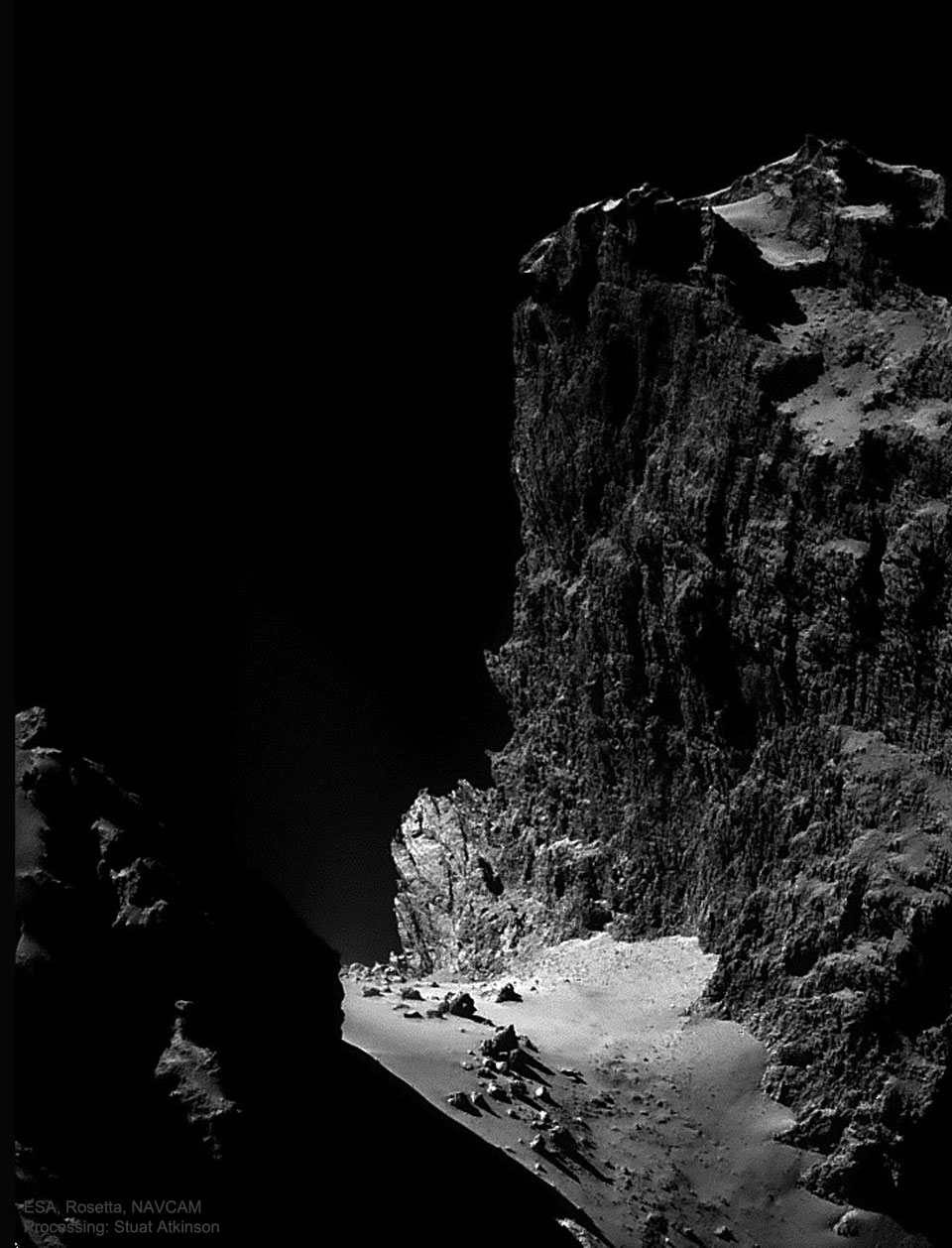2021年11月28日
A High Cliff on Comet Churyumov-Gerasimenko
Image Credit & Licence: ESA, Rosetta spacecraft, NAVCAM; Additional Processing: Stuart Atkinson
Explanation: This high cliff occurs not on a planet, not on a moon, but on a comet. It was discovered to be part of the dark nucleus of Comet Churyumov-Gerasimenko (CG) by Rosetta, a robotic spacecraft launched by ESA that rendezvoused with the Sun-orbiting comet in 2014. The ragged cliff, as featured here, was imaged by Rosetta in 2014. Although towering about one kilometer high, the low surface gravity of Comet CG would likely make it an accessible climb — and even a jump from the cliff survivable. At the foot of the cliff is relatively smooth terrain dotted with boulders as large as 20 meters across. Data from Rosetta indicates that the ice in Comet CG has a significantly different deuterium fraction — and hence likely a different origin — than the water in Earth’s oceans. Rosetta ended its mission with a controlled impact onto Comet CG in 2016. Comet CG has just completed another close approach to Earth and remains visible through a small telescope.
Tomorrow’s picture: stellar pinwheel
丘泽彗星的高耸悬崖
影像提供与授权: ESA, Rosetta spacecraft, NAVCAM; 附加处理: Stuart Atkinson
说明: 这座悬崖出现在一颗彗星的表面上,而不是在行星或卫星上。明确的说,它位在丘泽彗星 (CG)上,是由2014年开始绕行这颗黝黑彗核的欧洲航天局罗塞塔航天器所发现。影像所呈现的这座嵯峨悬崖,虽然高达1公里,但由于丘泽彗星的表面重力很低,除了可攀崖而上之外,由崖顶舍身一跃而下的人们,应该也会存活下来。在影像中,崖底有相当平整的原野,上头散布着高可达20公尺的圆石。罗塞塔号的数据显示,丘泽彗星的冰之氘比例和地球海水差异颇大,因此二者的水之来源可能不同。在2016年时,罗塞塔号受控性的撞入丘泽彗星,终结它的任务。丘泽彗星不久前才再次通过地球附近,目前用小望远镜仍然可见。
明日的图片: stellar pinwheel







